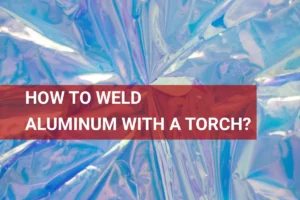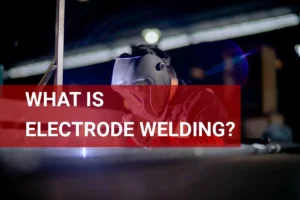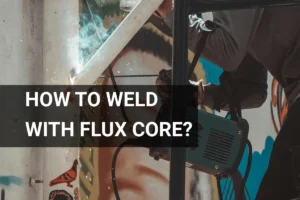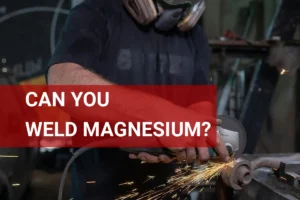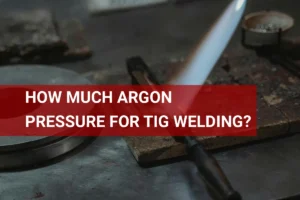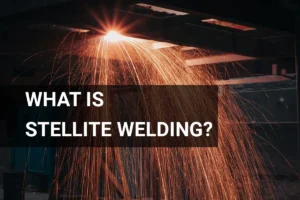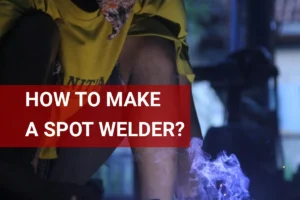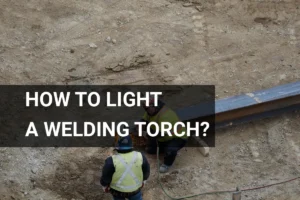What is Flux Core Welding? – Overview, Process, Uses, and Tips
Published on: May 14, 2025 | Last modified: March 4, 2025
By: Joe Carter
One question I am asked a lot is what is flux core welding? Understanding this technique is crucial because it’s a popular choice for construction and repair jobs. I’ve found that it offers versatility in different environments, from outdoor settings to heavy manufacturing.
In this guide, we’ll explore various topics, including how flux core welding works, the types available, essential steps to perform it, factors that affect its effectiveness, typical problems you might encounter, aftercare tips, use cases, and alternatives. We’ll also touch on things like what’s a flux core welder and what is flux core welding used for.
Contents
What is Flux Core Welding?
Flux core welding uses a tubular wire with flux. It’s great for outdoor jobs because it isn’t affected by wind. Commonly used in construction and heavy repair, it’s reliable in tough conditions.
How Does Flux Core Welding Work?
Flux core welding, or flux-cored arc welding (FCAW), is an efficient process that uses tubular wire filled with flux to create welds. The flux inside the wire melts during welding, producing a shielding gas that protects the weld from contamination. This method typically operates at a voltage of 18 to 31 volts and a current of 100 to 300 amps. It’s ideal for various materials but performs especially well with thick metals, making it a favorite in industrial settings. What sets flux core welding apart? It can be used indoors and outdoors, thanks to its ability to create strong welds even in windy conditions. This process is popular for steel and wrought iron, commonly used in construction and manufacturing. I once made a mistake using a flux core welder on thin metal. I had the settings wrong, and the weld burned through! After that, I learned the importance of using the right flux core welding wire for your specific task. So, if you’re wondering what flux core welding is good for, remember that it excels at joining metals that require strong bonds without overheating the material.
Types Of Flux Core Welding
What are the types of flux core welding?
-
Self-shielded Flux Core Welding
This type uses a tubular wire filled with flux and doesn’t need external gas for shielding. To perform this, feed the wire into the welder. The flux burns and produces a shielding gas, protecting the weld pool from contaminants.
-
Gas-shielded Flux Core Welding
This method combines flux-cored wire and external shielding gas for higher quality welds. To set this up, connect your gas source to the welder and use a dual-shield cored wire, achieving a more stable arc in various positions. The choice of gas can significantly impact the welding process and quality, and understanding what gas is used for welding is crucial for optimal results.
-
Dual Shielded Flux Core Welding
This technique uses both flux and external shielding gas to enhance penetration and improve weld quality. To execute this, prepare your welder by adjusting parameters and selecting the right shielding gas for your material. Understanding different welding processes can help optimize these settings effectively.
If you are interested in innovative methods, you might want to explore how to create a welding machine using a 12v battery setup.
-
Vertical Flux Core Welding
This approach focuses on welding in vertical positions and requires skill to manage gravitational pull. To perform vertical flux-cored welding, maintain a steady hand and adjust your speed to control the molten metal. When choosing equipment, consider exploring options for finding the best welding machine for home use.
-
Pipe Flux Core Welding
This technique is specifically designed for pipe applications, often resisting high pressures and stresses. To use it, employ a suitable flux core wire and specific settings for flow and heat to achieve sound joints in piping systems. Understanding the brightness of a welding arc is crucial for ensuring safety and precision in such highly demanding environments, so explore how bright a welding arc can be here.
So far we covered the different types of flux core welding. Next, let’s look at the benefits of flux core welding.
Advantages of Flux Core Welding
Flux core welding has several benefits that make it a popular choice among welders.
| Advantage | Description | Best Use Case |
|---|---|---|
| Outdoor Capability | It’s less affected by wind, allowing stronger welds outside. | Construction projects in unpredictable weather. |
| Speed | Flux core welding is faster than many other methods, cutting project time. | Large-scale fabrications where time is crucial. |
| Cost-Effective | Typically requires less equipment than MIG and TIG welding. | Small workshops and hobbyists looking to save money. |
| Versatility | Can weld various materials, from thin sheets to thick plates. | Metal fabrication and repair of diverse structures. |
| Good Penetration | Offers strong penetration in thicker materials. | Heavy equipment repairs where strong joints are needed. |
We have now covered the benefits of flux core welding.

Factors Affecting Flux Core Welding
What factors influence flux core welding performance? Let’s break it down.
-
Welding Speed
Welding speed plays a crucial role in bead quality. Speeds of 200-500 mm/min (7.9-19.7 In/min) allow for controlled penetration and consistent welds.
-
Electrode Diameter
The electrode diameter affects heat delivery and penetration. Common sizes range from 0.8 mm to 1.2 mm (0.030 In to 0.047 In), impacting how well the weld fuses with the base material.
-
Arc Length
Arc length directly influences stability and weld appearance. Holding the arc too short can cause poor fusion and spatter. Aim for 10-15 mm (0.4-0.6 In) for reliable results.
-
Heat Input
Heat input affects penetration and bead shape. Monitor voltage, amperage, and speed to maintain a heat input of 1.5-3.5 kJ/mm (38-89 Kj/in) for optimal performance.
-
Ambient Conditions
Weather can impact welding effectiveness. Wind, temperature, and humidity can lead to issues like porosity, especially when working outdoors.
We’ve wrapped up the influences on flux core welding. Next up, we’ll look at common issues to keep in mind.
Typical Problems to Be Aware Of
Let’s look at issues specific to flux core welding.
-
Excessive Spatter
Flux core welding often produces excessive spatter, identifiable by tiny metal droplets around your weld. To fix this, adjust your voltage or wire feed speed for smoother operation.
-
Inadequate Penetration
Inadequate penetration in flux core welding appears as shallow welds. I once made the mistake of using a travel speed that was too fast, resulting in weak joints. Slow down when welding and check your settings for optimal penetration. Additionally, if faced with frozen pipes during winter, you might find it useful to explore how to use a welder to thaw pipes.
-
Porosity in Welds
Porosity occurs in flux core welding due to trapped gases, showing up as tiny holes in the weld bead. Clean your base metals thoroughly and use proper technique to prevent this issue.
-
Overheating Of Base Metals
Overheating in flux core welding manifests as warping. If your materials bend, it’s a sign you’re applying too much heat. Shorten your welds and adjust the heat settings accordingly.
-
Difficulties With Slag Removal
In flux core welding, removing slag can be challenging. You might notice a hard coating on the weld. Use a chipping hammer and wire brush to clean it effectively without damaging your work.
What Are the Alternatives to Flux Core Welding?
If you want results similar to flux core welding, consider MIG or TIG welding. MIG (Metal Inert Gas) offers a cleaner process and is great for thin metals. However, it might not work as well outdoors or in windy conditions. On the other hand, TIG (Tungsten Inert Gas) provides precision but often slower speeds.
For heavy-duty tasks, stick welding could be your go-to. It’s robust and versatile and can handle dirty surfaces better than other methods. Meanwhile, multi-process welders, like the Everlast POWER MIG 200, give you options to switch between processes, adjusting to your project needs quickly. Having navigated similar challenges before, I can assure you, picking the right tool really helps!
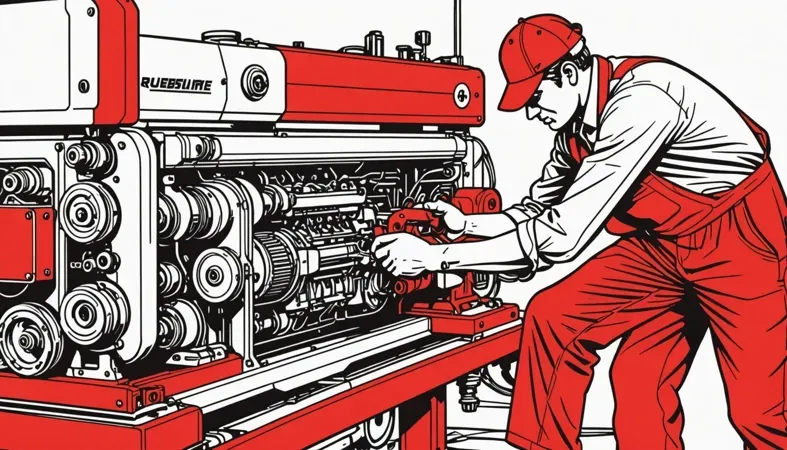
Frequently Asked Questions (FAQs)
Here are some questions I typically get asked about flux core welding.
What is Flux Core Welding Good for?
Flux core welding is good for a variety of applications. It’s often used in construction and metal fabrication due to its ability to weld thick materials effectively. With speeds of up to 10 inches (25 Cm) per minute, it’s a favorite for outdoor and windy conditions.
What’s the Difference Between Flux Core and MIG Welding?
The main difference between flux core and MIG welding is the shielding method. Flux core uses a tubular wire filled with flux that produces its shielding gas, while MIG relies on an external gas supply. This results in flux core being more versatile and effective in outdoor areas.
Is Flux Core As Strong As Stick Welding?
Yes, flux core can be as strong as stick welding when done correctly. Both methods create strong welds on thick materials, but flux core is usually easier to learn. Reports show that weld strength can be upwards of 70,000 psi. Before undertaking any welding project, sourcing the right materials is crucial, and knowing where to obtain welding gas is an essential step.
What Are the Disadvantages Of Flux Core Welding?
Some disadvantages of flux core welding include limited visibility and greater slag production. The process can create more cleanup work, with slag covering the welds. Additionally, it’s generally less clean compared to MIG welding due to the flux in the wire.
What is a Flux Core Welder Good for?
A flux core welder is good for projects requiring versatility and portability. It’s great for working on thicker plates and can handle outdoor conditions effectively. Many users prefer it for repairs and fabrication because it’s often more affordable than other setups.
Conclusion
I hope this gave you what you needed about flux core welding. We covered what flux core welding is, how it works, types, essential steps, factors that affect it, common problems, aftercare tips, use cases, and alternatives. You now have a solid understanding of flux core welders and flux cored arc welding.
Hopefully, I was able to impart some of my experience regarding what flux core welding is. In simple terms, it’s a process that uses a tubular wire filled with flux to protect the weld pool from contamination, typically suited for outdoor conditions. With versatility in applications, flux core welding is great for heavy steel work, making it a go-to for many welding tasks.
For further insights and resources on welding techniques and updates, feel free to visit our homepage at What is Welding.
References
- Lincoln Electric. (2020). The Procedure Handbook of Arc Welding (15th ed.). Cleveland, OH: Lincoln Electric Company.
- American Society of Mechanical Engineers. (2019). ASME Section IX: Welding and Brazing Qualifications. New York, NY: ASME.
Joe Carter is a retired welding professional with over 40 years of hands-on experience in the industry, spanning ship repair, structural welding, and even underwater projects. Joe is a master of MIG, TIG, and Stick welding. Passionate about mentoring the next generation of welders, Joe now shares his decades of expertise and practical insights to help others build rewarding careers in welding.
12V Battery, Construction, Flux Core Welding, Metal Fabrication, MIG Welding, Welding, Welding Process, Welding Techniques, Welding Tips, Welding Wire
